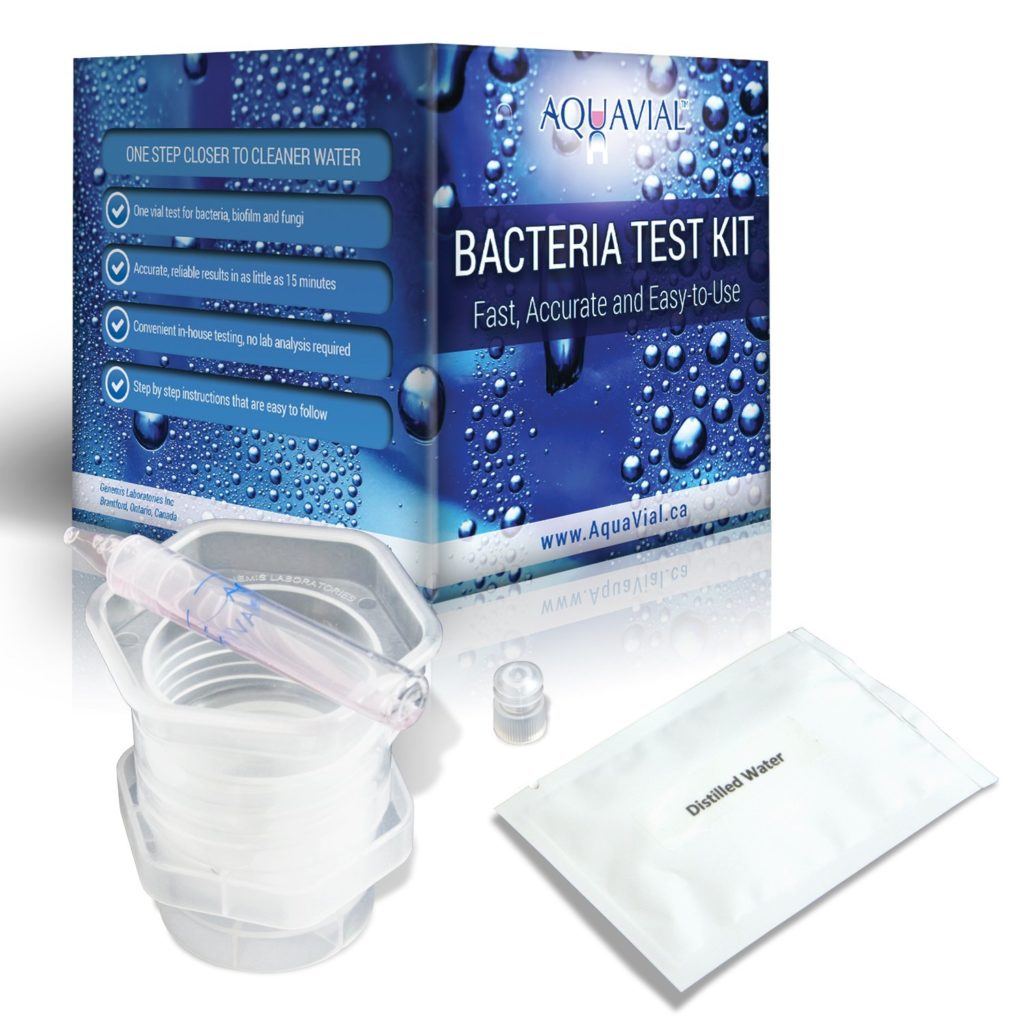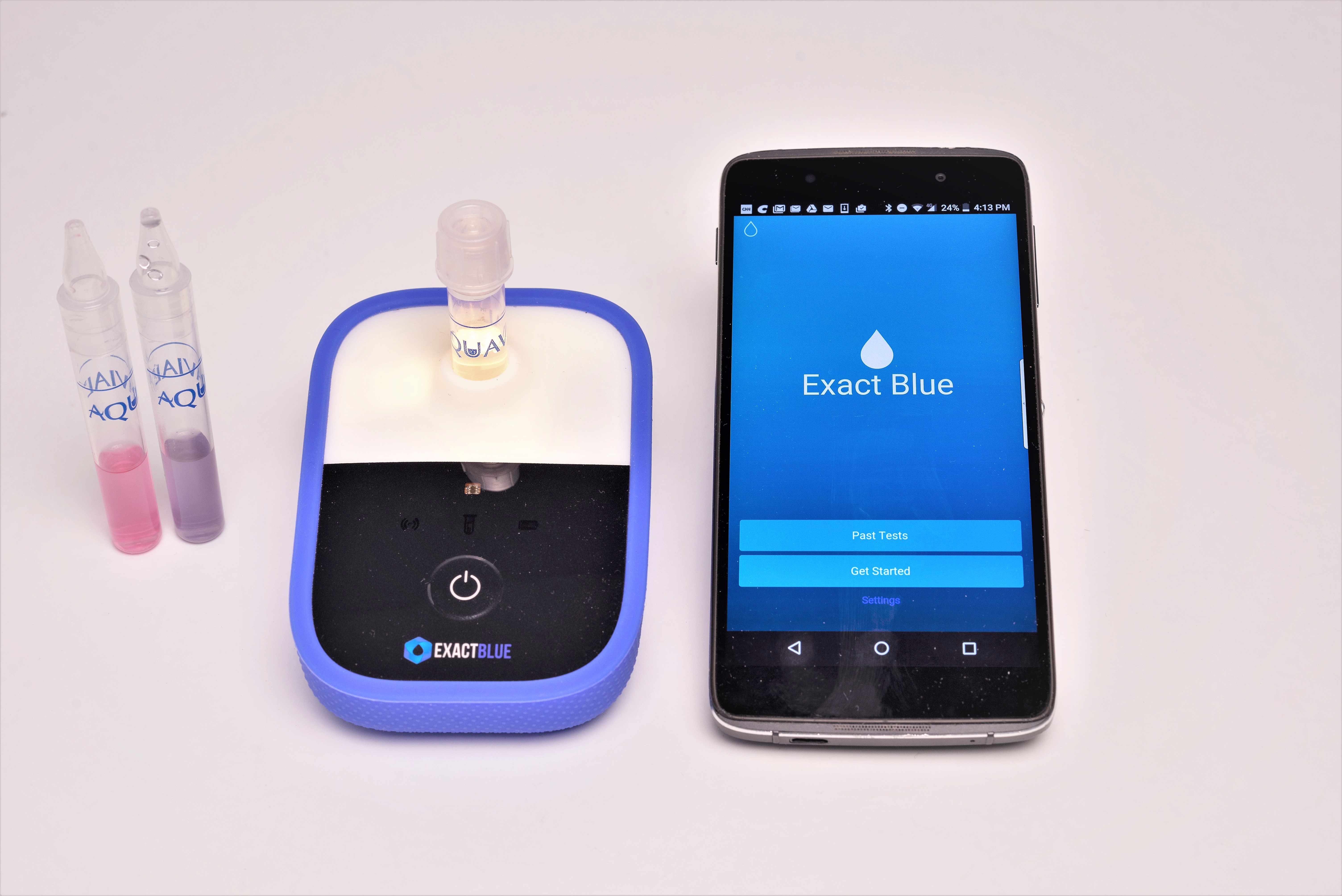Traditional methods for testing microbial water contamination can be cumbersome, expensive, and do not report immediate feedback. The overall process of sending a sample to a microbiological lab, waiting for the results, flushing and disinfecting a water system if a high bacteria content is present, and then verifying that bacteria has been purged, can take days to weeks. For sensitive industries ranging from pharmaceutical and medical to food processing, the detection of bacteria can bring daily operations to a full stop, and can incur severe financial setbacks.
Cambridge-based Genemis Laboratories Inc. is working to protect public health by rapid detection of contamination. With support from SOWC’s Advancing Water Technologies (AWT) program the company is bringing a new system to market that allows automated sampling.
“The field of microbiological testing techniques and systems is a unique space with enormous potential,” says George Botos, CEO of Genemis. “Each advance made toward real-time, continuous, and rapid monitoring of biological contaminants brings us closer to an apparatus that is inexpensive, simple-yet-robust, and more accurate than ever before.”
Dr. Bill Anderson, a Professor of Chemical Engineering at the University of Waterloo, has led previous research for Genemis with support from other funding sources including Ontario Centres of Excellence (OCE) and Industrial Research Assistance Program (IRAP) that helped the company develop its AquaVial test kit for rapid screening. The product has been sold in Canada, the United States, and Europe through Amazon and its online e-commerce platform.
“We developed a technique that depends not on the growth of micro-organisms, but rather on their interaction with gold nanoparticles,” Anderson says. “These type of nanoparticles have a special shape and surface chemistry that cause a colour reaction known as ‘surface plasmon resonance,’ in which the interaction of light causes the solution to change from pink in a healthy state to purple if bacterial contamination is present.”
Using this colour-change mechanism, Genemis commercialized a manual test kit which gives feedback in 30 minutes. A change in the test tube solution from pink to purple indicated that the number of bacteria or fungi cells in the sample exceeded the recommended World Health Organization (WHO) limit, and that disinfection should take place immediately.
The initial application targeted the dental industry, but its multifaceted applications were soon obvious. Since its release, the AquaVial kit has also been popular in niche markets such as the spa, hot tub, and pool industries, as well as casual users who want to verify clean water in, for example, their well or RV home.
Botos says the company always intended to expand into other markets, such as travel, food processing, pharmaceuticals, and municipal drinking water, but to do so gradually. Genemis is also in talks with a number of NGOs to collaborate as partners, in order to collect and analyze water quality data.
“In certain municipalities, such as ones we have encountered in the United States, it can be difficult to find access to microbiological analysis,” Botos says. The government does not always offer the same free lab services that are available in Canada.”
Another goal, Botos says, was to build on the test tube kits to develop more advanced versions of the technology that perform quicker testing and provide powerful data analytics. Ultimately, Genemis wants to work toward developing a robust tool that reports continuous feedback.
The AWT funding has provided integral support toward advancing these ambitions. The AWT program is designed to help connect businesses in Ontario with academic experts to develop and demonstrate water technologies for successful introduction to the market.

Genemis’ AquaVial tesk kit for rapid screening. Copyright: Genemis Laboratories Inc.
“The AWT program has been pivotal because it allowed us to continue working with Bill and his team of researchers,” Botos says. “Building on AquaVial, which provides results in 30 minutes, the new prototype called ExactBlue delivers feedback in a mere two minutes.”
The new ExactBlue technology provides measurable, quantitative results, forgoes manual sampling, has a higher sensitivity to bacteria, and gives more robust feedback beyond AquaVial’s relatively simplistic colouration alert for bacteria.
“The purpose of this AWT project is to advance the process we originally developed for a test tube kit,” Anderson says. “ExactBlue uses a sensor that can be used whether for field testing as a portable device, or with an automated sampling system for online water monitoring. The ExactBlue reader can send data analytics to your smartphone and to a cloud database. Instead of conducting manual samples to send to a lab, you can now track, in real time, quantitative results about the number of bacteria cells in your water sample.”
Eventually, the scope of the project is to achieve continuous water quality monitoring. The second stage of the AWT project will give access to a water treatment facility for testing. According to Botos, the scope of the project is to develop a system that monitors water quality continuously, and triggers an alert for high bacteria levels automatically. Genemis is in talks with two Ontario municipalities as potential sites for a six-month pilot to start in fall 2017.
Anderson cites AWT funding as crucial. “Everything can work fine in a lab, but in the field new things can happen,” he says. “Having the opportunity to adapt our lab results for a real water facility is a tremendous opportunity to generate the analytics that will allow us to advance our research and product.”
“The idea is that if we can adapt our technology to do continuous sampling in these types of large-scale facilities, then we can save these companies significant time and money,” he says. “When you know in real-time that there is a possible breach in water quality, you can begin to mitigate and plan around those problems right away.”
Botos is excited to be part of a growing network of companies that have benefitted from the AWT program. “The AWT funding has given us exposure to the water utilities community,” he says. “Being asked to participate in a drinking water pilot will connect us with the whole Ontario community of water cleantech startups.”


